Jaw Shaping in Chiang Mai
Search and Compare the Best Clinics and Doctors at the Lowest Prices for Jaw Shaping in Chiang Mai

Find the best clinics for Jaw Shaping in Chiang Mai
With Medijump you can browse 2 facilities offering Jaw Shaping procedures in Chiang Mai. The cheapest price available is $973 in Nonthaburi
Jaw Shaping in Thailand
Price: $ 973
Jaw Shaping in Nonthaburi
Price: $ 973
Jaw Shaping in Krabi
Price: $ 1,667
Malaysia offers the best prices Worldwide
Price: $ 672
The Science Clinic, located in Mueang Chiang Mai, Chiang Mai, Thailand offers patients Jaw Shaping procedures among its total of 6 available procedures, across 3 different specialties. Currently, there's no pricing information for Jaw Shaping procedures at The Science Clinic, as all prices are available on request only, whilst the national average price is approximately ฿126,677. There is currently a lack of information available on the specialists practicing at the Hospital, and they are not accredited by any recognized accreditations institutes
Nawapoom Clinic, located in Mueang Chiang Mai, Chiang Mai, Thailand offers patients Jaw Shaping procedures among its total of 5 available procedures, across 1 different specialties. Currently, there's no pricing information for Jaw Shaping procedures at Nawapoom Clinic, as all prices are available on request only, whilst the national average price is approximately ฿126,677. There is currently a lack of information available on the specialists practicing at the Clinic, and they are not accredited by any recognized accreditations institutes
Compare Before & After Photos of _procedure_photos.phpJaw Shaping
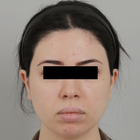
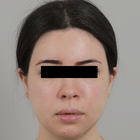
Front view

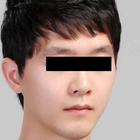
Front view
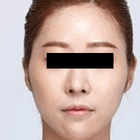
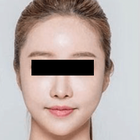
Front view
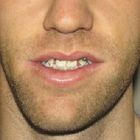

Front view
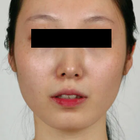
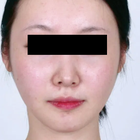
Front view
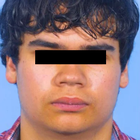
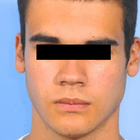
Front view

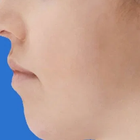
Full-side view
WHY US?
At Medijump, we're making medical easy. You can search, compare, discuss, and book your medical all in one place. We open the door to the best medical providers worldwide, saving you time and energy along the way, and it's all for FREE, no hidden fees, and no price markups guaranteed. So what are you waiting for?

Free

Best Price

Widest Selection

Risk-Free
What you need to know about Jaw Shaping in Chiang Mai
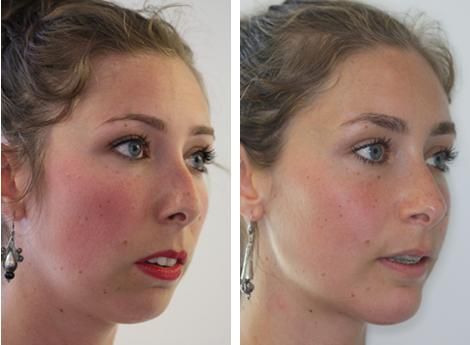
Also known as Mandibular Angle Reduction, V Line Surgery or Jawline Surgery, Jaw Shaping Surgery is performed with the purpose of narrowing the lower part of the face, with particular emphasis on the mandible (lower jaw) and the muscular attachments.
A wide jaw angle can be caused by enlarged muscle, bone, or a combination of the two. A prominent jaw angle or square jaw is considered a masculine trait, particularly in Asian countries. Therefore, many people opt for surgical correction to get their desired look. The surgery can shorten an overly long jaw and change a square-shaped face to an oval shape. Some people with temporomandibular joint (TMJ) disorders, uneven jaws, or jaws that causes pain when chewing might also undergo this surgery to correct pain.
There are several critical elements involved in the surgery, including the angles of the jaw, the body of the mandible, and the shape of the chin. While the procedure is typically performed on women with a square jawline who want a more feminine look, it can be done on both men and women. However, this procedure may not work for people who want to feminize a male’s face since males usually have a taller and longer face. Therefore, a V Line Surgery would only make a face look more elongated.
What does a Jaw Shaping Procedure Involve?
Various developmental, congenital, or some rare disorders such as acromegaly can cause enlarged mandibles, which can be corrected by Jawline Surgery. It is ideal for those with overly square or U-shaped jawline, overly manly jaw shape, bloated cheeks, and double chin. If you are considering V line surgery, you will need to be in a good state of physical and mental health.
Prior to the surgery, you will be examined by X-rays and 3D CT scans. Your surgeon will analyze and evaluate the overall structure of your jaw to create a plan to produce the desired result. You will also need to undergo medical tests such as ECGs to ensure that you don’t have a condition that may put you in danger or compromise the success of the surgery.
Surgery is performed under general anesthetic through tracheal intubation and leaves minimal scarring. You will need to fast for 8 hours before the surgery. Oscillating saws are used to reshape the jaw. The surgery can be performed inside the mouth (intraoral) or from outside the mouth (postauricular). The intraoral approach is the most widely used method. With this approach, an incision is made between the gum and the back of the cheek next to the jaw. Then, the jawline is carved out into their desired shape. A portion of the masseter muscle is shaved off, and the outer portion of the bone is chipped off. This approach is best for patients who aim to narrow their frontal view since the change is subtle and natural.
If the patient wants to change the appearance of the jaw angle from a side view, the overall contour of the bone will need to be changed. This means that the patient needs a full-thickness bone removal. Although it can be done through the intraoral approach, the surgeon’s view during this approach is very limited, which can decrease the precision of the procedure. Therefore, the best approach is from outside of the mouth or postauricular. To get direct access to the bone, the surgeon makes an incision hidden around the ear. This approach can remove a more substantial amount of bone. The recovery time using this approach is also much shorter than the intraoral approach since the swelling stays confined to the neck area.
How Long Should I Stay in Chiang Mai for a Jaw Shaping Procedure?
The typical length of time for Jaw Shaping is usually around 2 hours. Nevertheless, you have to stay in the hospital for around one to two days for initial recovery where you will be monitored to make sure everything is fine. After being discharged, plan to stay in the Chiang Mai for 10 to 14 days or until the surgeon says you can go home. The stitches are generally removed within two weeks after surgery, though this may vary from patient to patient.
What's the Recovery Time for Jaw Shaping Procedures in Chiang Mai?
Immediately after the surgery, you will need to wear a facial mask that presses tightly against the skin around the jaw to keep the post-surgery swelling down. Also, you will not be allowed to eat foods that require chewing because it will delay the recovery and can cause bleeding. If you undergo the intraoral approach, your food intake will be limited for a considerable length of time. You may feel some swelling, numbness, and discomfort around the incision for several days, but the surgeon will prescribe medications to help with the pain.
The recovery period can be different for each individual; some people may be able to go back to their regular routines after seven to ten days, but others may need more time to fully recover. Avoid doing any vigorous activity that increases your blood pressure for several weeks, such as jogging and other exercises. Most of the visible signs, such as swelling and bruising, should disappear within a few weeks. Symptoms such as hematoma and infection are common, and will usually subside within three to six months post-surgery.
What sort of Aftercare is Required for Jaw Shaping Procedures in Chiang Mai?
You must follow your surgeon aftercare instructions strictly to accelerate your recovery and minimalize possible complications. The instruction will likely include the following recommendations:
- Food intake. You may need to consume a liquid diet for a week after surgery as drinking your food is less painful and prevents trauma to the jaw area. You should be able to consume hard foods within one month.
- Oral hygiene. An antibacterial mouth rinse will keep your mouth and incision area clean, which will decrease the possibility of infection.
- Avoid tobacco and alcohol. Smoking and drinking alcohol should be avoided for a while.
- Keep the head elevated. You should keep your head elevated even when you are sleeping as it is the key to reduce swelling.
- Compression bandage. You are recommended to wear a compression bandage at all times for the first three days and while sleeping for the first week or two.
- Avoid strenuous activity. Do not do any heavy lifting or exercise for at least a month. However, do walk around and practice some gentle movement.
- Attend follow up appointments. The surgeon will check your progress to avoid any complications.
What's the Success Rate of Jaw Shaping Procedures in Chiang Mai?
Jaw shaping surgery is a safe procedure when performed by a trained surgeon. Around 94% of patients express their satisfaction with this procedure. However, it is important to have realistic expectations. You should also be aware of the possible risks that this surgery may cause. These risks include infection, asymmetry, seroma, deep vein thrombosis, pulmonary embolism, and hematoma. Partial numbness of the jaw can also happen due to nerve damage.
Are there Alternatives to Jaw Shaping Procedures in Chiang Mai?
If you wish to reshape your jaw but do not want to undergo surgery, there are non-invasive options available. The most popular alternatives are Botox and Dysport, which can effectively contour the jaw by relaxing the appearance of a square jaw. This procedure shrinks the masseter muscle by weakening it. These injectable can also be used to correct facial asymmetry around the jawline area. Since they are non-invasive, you can return to your daily activates right away and they offer a subtler shift in your appearance. However, these techniques are limited to cases in which the masseter is enlarged and may not work as well as V Line Surgery.
Whilst the information presented here has been accurately sourced and verified by a medical professional for its accuracy, it is still advised to consult with your doctor before pursuing a medical treatment at one of the listed medical providers
No Time?
Tell us what you're looking for and we'll reachout to the top clinics all at once
Enquire Now

Popular Procedures in Chiang Mai
Prices Start From $70

Prices Start From $28

Prices Start From $1,945

Prices Start From $275

Recommended Medical Centers in Chiang Mai for Jaw Shaping

- Interpreter services
- Translation service
- Religious facilities
- Medical records transfer
- Medical travel insurance
- Health insurance coordination
- TV in the room
- Safe in the room
- Phone in the room
- Private rooms for patients available

- Interpreter services
- Translation service
- Religious facilities
- Medical records transfer
- Medical travel insurance
- Health insurance coordination
- TV in the room
- Safe in the room
- Phone in the room
- Private rooms for patients available

- Interpreter services
- Translation service
- Religious facilities
- Medical records transfer
- Medical travel insurance
- Health insurance coordination
- TV in the room
- Safe in the room
- Phone in the room
- Private rooms for patients available

- Interpreter services
- Translation service
- Religious facilities
- Medical records transfer
- Medical travel insurance
- Health insurance coordination
- TV in the room
- Safe in the room
- Phone in the room
- Private rooms for patients available

- Interpreter services
- Translation service
- Religious facilities
- Medical records transfer
- Medical travel insurance
- Health insurance coordination
- TV in the room
- Safe in the room
- Phone in the room
- Private rooms for patients available

- Interpreter services
- Translation service
- Religious facilities
- Medical records transfer
- Medical travel insurance
- Health insurance coordination
- TV in the room
- Safe in the room
- Phone in the room
- Private rooms for patients available

- Interpreter services
- Translation service
- Religious facilities
- Medical records transfer
- Medical travel insurance
- Health insurance coordination
- TV in the room
- Safe in the room
- Phone in the room
- Private rooms for patients available

- Interpreter services
- Translation service
- Religious facilities
- Medical records transfer
- Medical travel insurance
- Health insurance coordination
- TV in the room
- Safe in the room
- Phone in the room
- Private rooms for patients available

- Interpreter services
- Translation service
- Religious facilities
- Medical records transfer
- Medical travel insurance
- Health insurance coordination
- TV in the room
- Safe in the room
- Phone in the room
- Private rooms for patients available

- Interpreter services
- Translation service
- Religious facilities
- Medical records transfer
- Medical travel insurance
- Health insurance coordination
- TV in the room
- Safe in the room
- Phone in the room
- Private rooms for patients available
Jaw Shaping in and around Chiang Mai
About Chiang Mai
Chiang Mai is the fourth largest city in Thailand and is situated in the Northern part of the country. Chiang Mai is a land of misty mountains, hillside tribal villages and lush green landscape. Chiang Mai is not only an amazing holiday location but is also one of the most reliable and affordable destinations for medical tourism. Surprisingly, medical costs are cheaper here than in Bangkok and the facilities are up to date and for 3000 baht (approximately $100), you can have a complete health check-up.
Each year, thousands of medical tourists from all over the globe flock to Chiang Mai. The city's superior hospitals that are top-rated globally, boast dedicated International departments specifically put in place to meet the varying needs of these medical visitors. Impeccable hospitality services are a hallmark of these facilities, coupled with hospital personnel and medical professionals who are proficient in English.
These hospitals are equipped to provide wide-ranging treatments such as cardiac surgery, amongst others, and cosmetic procedures including but not limited to breast augmentations, liposuction, and cool sculpting. There are also quite attractive medical packages available that conveniently bundle treatment and accommodation.
The Chiang Mai Ram International, bearing a notable reputation for their remarkable services, stands out as the most frequented hospital in the city. Moreover, Chiang Mai is rich with numerous restorative amenities including spas, resorts as well as massage and healing centers. These outlets have cemented the city’s status as a perfect haven for post-treatment rejuvenation.
Popular areas in Chiang Mai
The metropolitan area of Chiang Mai is home to over 1 million residents. Listed below are the popular areas of this amazing city. Each area has its own charm and offers something to the visitors.
- Old City: Is the cultural and religious epicenter of Chiang Mai. The old town has moats and fortress walls from ancient times. Pae gate, which lies in the Old Town, is the most famous traditional landmark of the city.
- Nimmanhemin road: You can experience a bustling and vibrant nightlife here. Located close to the famous Chiang Mai University, this place is quite popular with the young and dynamic student population and you can find several affordable hostels and guesthouses on the Nimmanhemin road, varied housing options are available for long-term expats.
- Chiang Mai Night Bazaar: Considered as the ‘downtown’ of Chiang Mai, it is a paradise for shopping sprees. You will find a lot of street food shops which offer authentic Thai delicacies at affordable prices. Handicrafts, antiques, textiles and other traditional Thai products also come with affordable price tags. After 6 pm, this area comes alive and you can expect to see the streets very busy with enthusiastic tourists and locals.
- Riverside: The Riverside Chiang Mai has all of the old world charms that the city is renowned for with affordable eateries and live-music venues combined with the fresh river breeze and the relaxed atmosphere all helps to make it the best place to chill out during evening time.
- Santitham: The Santitham area of the city is mainly populated by Thai locals and this spot is less touristy and a bit more laid back. You can find supermarkets, public parks, and many residential buildings within this neighborhood.
Weather and climate in Chiang Mai
Located at an elevation of 316 meters, Chiang Mai enjoys a cooler and pleasant climate. As it experiences a typical tropical climate, winter, and spring seasons are not applicable. Instead, Hot, Cool and Rainy seasons are distinct in Chiang Mai.
- Cool: Early December to February. Day time temperature rises up to 30°C, yet, you may require sweatshirts to keep yourself warm as dusk approaches. It is the best weather to pay a visit to Chiang Mai. January is the coolest month of the season with temperatures dropping to as low as 10°C.
- Hot: Mid-February to mid-June. March is the hottest month in Chiang Mai with the temperatures rising to 40°C. You can escape the blistering heat waves and embrace the chilly breeze by visiting the nearby mountains.
- Rainy: Early June to late October. The average temperature drops down to 32°C during the rainy season. It rains almost every single day without fail. Even though the rainfall is heavy and the storms are intense, they won’t last for long. August is the wettest month of the year.
Getting around in Chiang Mai
Chiang Mai International Airport proclaims its status as the fourth busiest air hub in the country. It skillfully and efficiently manages a substantial volume of domestic and international flights. These flights provide vital connections between Chiang Mai and an array of prominent cities across the globe such as Bangkok, Beijing, Doha, and Ho Chi Minh, to mention a few.
While Chiang Mai, the bustling metropolis, boasts a sizeable expanse and a cosmopolitan vibe, its public transportation system falls somewhat short of organized. However, this minor shortcoming does not pose a barrier to exploration of this magnificent city. A plethora of other transportation mediums step in to bridge this gap, facilitating comfortable and convenient travel around the city. These constitute both traditional and modern modes of transport that cater to different tastes and preferences, all aimed at ensuring visitors and locals alike can fully experience and appreciate the city's remarkable offerings.
- Songthaew: The Songthaew or red truck is the most common and the desirable mode of transportation. For 30 Bahts, you can travel anywhere within the city, as long as you have no issues sharing your ride with other passengers. You can book private songthaew using the mobile app, GRAB.
- Tuk-tuks: Are the second most common mode of transportation next to songthaew. However, they are pricey as the rates start at 60 Bahts. It could be inexpensive too if you have exceptional bargaining skills.
- Taxis: Are quite expensive, costing somewhere between 100 and 200 Bahts per ride in the city.
Tourist visas in Chiang Mai
Thailand is a popular tourist destination for people from all over the world. Citizens of many countries, including the US, UK, Australia, Germany, and Singapore, do not need a visa to enter Thailand and can stay for up to 30 days without a visa.
Citizens of India and China who intend to stay in Thailand for up to 15 days can apply for a visa on arrival. However, if they want to stay for longer than 15 days, they will need to apply for a different type of visa, such as a transit visa or a non-immigrant visa.
Here is a summary of the visa requirements for Indian and Chinese passport holders:
- Visa on arrival: Indian and Chinese passport holders can apply for a visa on arrival if they intend to stay in Thailand for up to 15 days. The visa fee is 2,000 Thai baht.
- Transit visa: Indian and Chinese passport holders who are only passing through Thailand on their way to another country will need to apply for a transit visa. The transit visa allows them to stay in Thailand for up to 48 hours.
- Non-immigrant visa: Indian and Chinese passport holders who want to stay in Thailand for longer than 15 days will need to apply for a non-immigrant visa. There are different types of non-immigrant visas available, depending on the purpose of the visit.
To apply for a visa on arrival or a non-immigrant visa, Indian and Chinese passport holders will need to have a valid passport, a return flight ticket, and proof of funds. They may also need to provide additional documents, such as a hotel reservation or a letter of invitation from a Thai resident.
Additional Information
- Thai Baht is the currency of Thailand. 1 USD is around 34.5559 THB as of 2023.
- ATMs and exchange bureau are present at most of the tourist locations, making the withdrawal of local currency easy. You can pay by credit card in big restaurants, shopping malls, and hospitals.
- Thai is the official language of Thailand and is widely spoken in Chiang Mai. However, most of the locals in Chiang Mai do understand and speak good English. The street signs are also translated into English making it is easier for the tourists to get around.
- 90% of the total population of Thailand practice Buddhism, followed by Islam. Thai nationals exhibit deep love and admiration for their royal family.
- Notable public holidays:
- January 1 – New Year's Eve
- February 19 – Makha Bucha day
- April 12-16 – Songkran Festival
- May 5 – Coronation day
- December 10 – Constitution day
Popular Searches
- Plastic Surgery in Thailand
- Dental Implants in Thailand
- Hair Transplant in Thailand
- Breast Augmentation Thailand
- Gastric Sleeve in Thailand
- Gender Reassignment Surgery in Thailand
- Laser Hair Removal in Bangkok
- Botox in Bangkok
- Dermatology in Bangkok
- Breast Augmentation in Bangkok
- Coolsculpting in Bangkok
- Veneers in Turkey
- Hair Transplant in Turkey
- Rhinoplasty in Turkey
- Stem Cell Therapy in Mexico
- Rhinoplasty in Mexico
- Liposuction in Mexico
- Coolsculpting in Tijuana
- Rhinoplasty in Korea
- Scar Removal in Korea
- Gastric Sleeve in Turkey
- Bone Marrow Transplant in India
- Invisalign in Malaysia
- Plastic Surgery in the Dominican Republic
- Tummy Tuck in the Dominican Republic
- Plastic and Cosmetic Surgery in Poland
- Rhinoplasty in Poland
- Hair Implant in Poland
- Dental Implants in Poland
- IVF in Turkey

